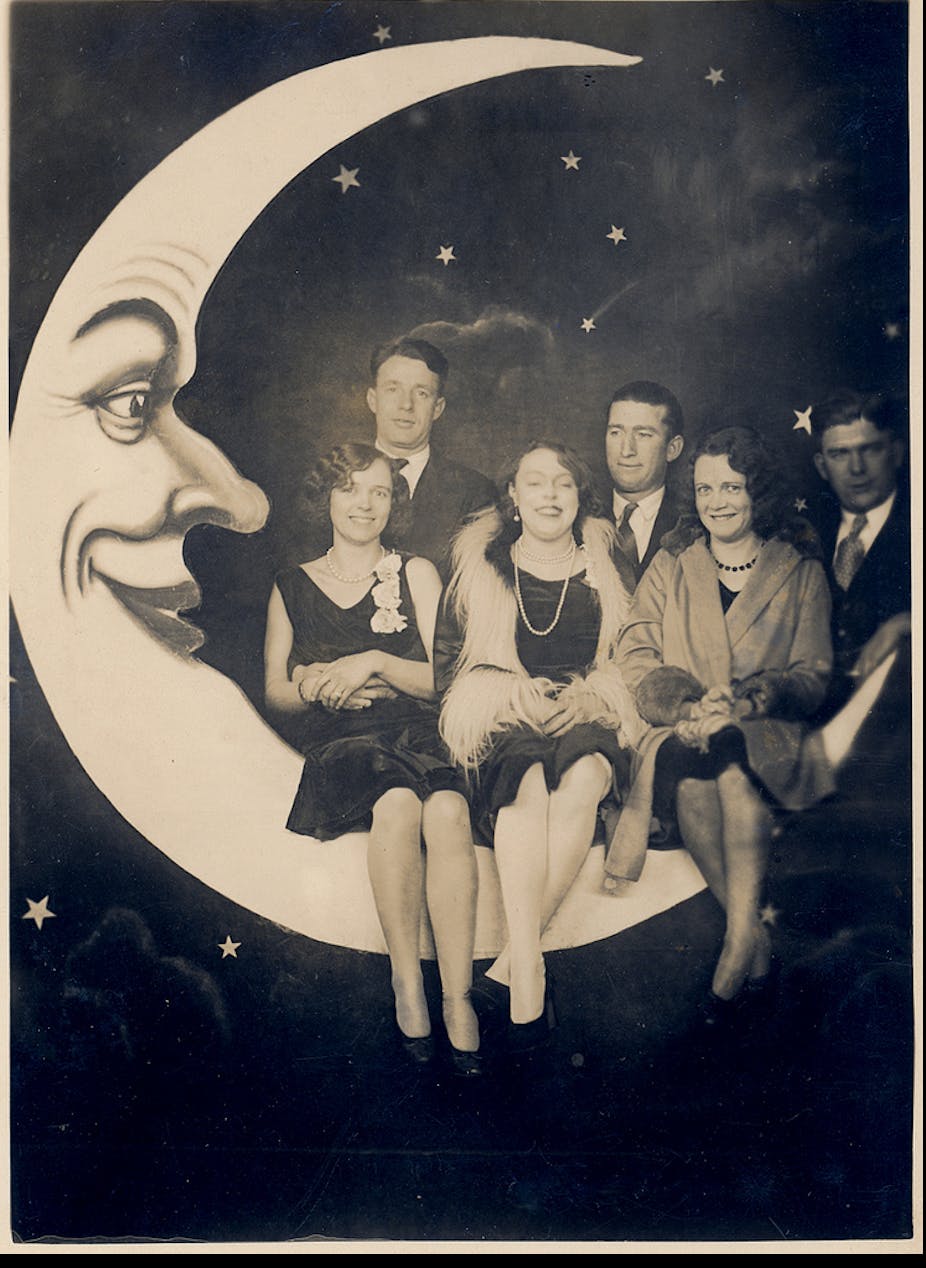What do Chile’s recent volcanic eruptions and tomorrow morning’s total lunar eclipse have in common? Well …
Just before sunrise, Earth’s shadow will totally hide the normally-bright moon for about 100 minutes. Actually the moon will not be totally hidden, but cloaked in an eerie brown/orange and possibly a blood-red veil.
Why will the moon’s colour transform from a normally bright beacon to something more ethereal? The answer is related to the spectacular red sky sometimes seen at sunset.
The sun’s visible light is preferentially observed at the red end of the electromagnetic spectrum (see image below) because of aerosols – such as dust and ash particles – in Earth’s atmosphere.
The process, termed Rayleigh scattering, is more efficient at the blue end of the spectrum, so that more blue light is scattered away from an observer’s line of sight.

At sunrise and sunset, when the sun is low on the horizon, the sunlight passing at grazing incidence upon the Earth must pass through a greater thickness of air than when it is directly overhead.
Rayleigh scattering of this light from the extra-thick atmosphere scatters the blue light away from the observer, and allows more red light through.
Similarly, tomorrow morning’s eclipsed moon will be partially illuminated from Rayleigh-scattered light passing through Earth’s atmosphere.
The Puyehue volcanic eruption could further amplify this effect because of the amount of aerosols injected into the atmosphere.
Ironically, we could actually see the effect of volcanic ash clouds on our own atmosphere from the scattered light reflected from the moon during the total lunar eclipse.
Historically, lunar eclipse observers are not alone in “seeing red” from the effects of volcanic atmospheric aerosols. In 1815, Indonesia’s Mount Tambora erupted, producing an estimated 160 cubic kilometres of ejecta.
Tambora’s outburst was the largest volcanic eruption in recorded history and produced the “year without a summer”.
Contemporaneously, the English landscape painter, Joseph Turner, produced spectacular paintings of English skies with his trademark mystical and dramatic sunsets.
Is Turner’s art an accurate recording of volcanic ash-induced sunsets in Europe?

Although difficult to prove (to me at least), the link between Turner’s unique style and volcanic eruptions remains tantalising. So much so that in 2007 a research team from the National Observatory in Athens analysed 554 paintings from 181 artists in an attempt to improve knowledge of climate change induced by volcanic eruptions.
In many ancient cultures, the monthly lunar cycle has been linked to fertility and female deities. The remarkable influence of the moon in modern western culture and language is reflected in colloquialisms such as the word “lunatic”, describing a person displaying odd behaviour that could be blamed on the lunar cycle.
Possibly originating from late Latin, the term has permeated through the ages from old French in the 13th century, through to modern political rhetoric such as “the lunatic fringe”.

The fascination with our nearest celestial neighbour is strongly rooted in all cultures and is exemplified by the ongoing mystery associated with lunar eclipses.
A lunar eclipse is not solely the domain of astronomy; it is accessible to anyone who appreciates beauty.
But, if the weather conspires against this spectacle, and frustration is rising, don’t be tempted to display any lunar related odd behaviour, but rather watch a good movie such as Moonstruck.
Will you be watching the total lunar eclipse? Why/why not? Leave your comments below.

